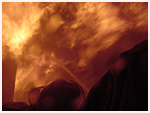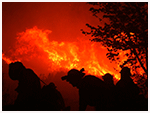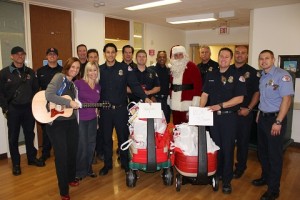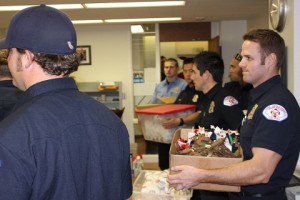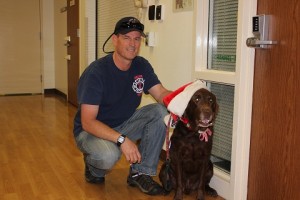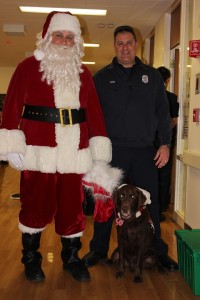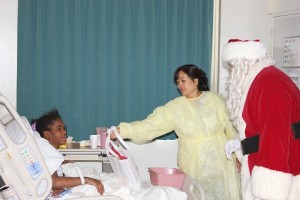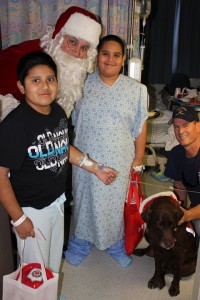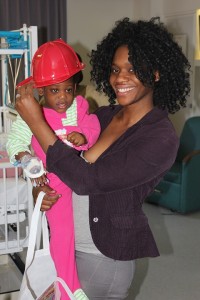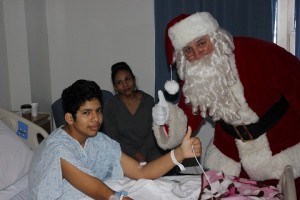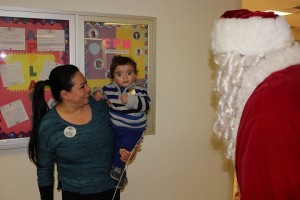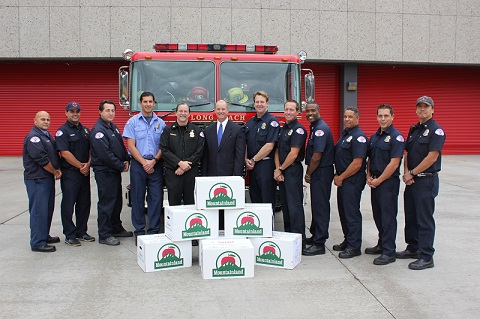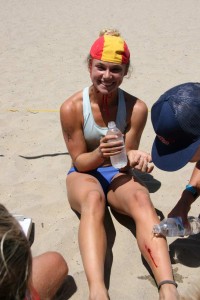It’s The Law – Carbon Monoxide Detectors
By jiarviz | December 21, 2012
The Long Beach Fire Department would like to remind the community about the Carbon Monoxide Poisoning Prevention Act (Senate Bill – SB 183). SB-183 requires that a carbon monoxide (CO) device be installed in all dwelling units intended for human occupancy. The effective date for Multi-family dwelling units such as apartments, having fossil fuel burning appliances and/or attached garages, is January 1, 2013. On July 1, 2011 SB-183 went into effect for a single-family dwelling having fossil fuel burning appliances and/or attached garages. It will go into effect for hotels and motels having fossil fuel burning appliances and/or attached garages on January 1, 2016.
CO is a colorless, odorless gas that is produced from heaters, fireplaces, furnaces, and many types of appliances and cooking devices. The only way to detect the poisonous and potentially fatal gas is with a detector. According to the State Fire Marshal’s Office CO claims the lives of an average of 480 people, and sends more than 20,000 people to emergency rooms across the nation. The best way for homeowners to stay protected from carbon monoxide is to have a CO detector installed on every floor and outside each sleeping area. The California Office of the State Fire Marshal cited a recent study that found nearly nine in 10 California households do NOT have a CO detector. Many consumers are likely unaware of the need to have their homes equipped, and many may need to remind their landlords to act.
Owners or landlords of multi-family leased or rental dwellings, such as apartment buildings, are required to comply with the law and are responsible for installation, so for tenants whose units do not have a CO detector now is the time to follow up with landlords by requesting one. Failure to equip a property with CO detectors puts families in danger, and is a violation of State law that is punishable by a maximum fine of $200 for each offense. CO detectors do not take the place of smoke detectors; you must have both to fully protect occupants. If you already have both a CO detectors and smoke detectors in your home it’s a good time of year to replace the batteries.
Here are some guidelines to help protect against CO poisoning:
- Install a CO detector near each sleeping area and on every level of the home, including the basement. Ensure that the alarms are plugged in the outlet or, if battery operated, have working batteries installed. Make certain each person can hear the CO alarm sounds from his or her sleeping room.
- Have fuel burning heating equipment and chimneys inspected by a qualified professional every year before cold weather arrives. During the heating season, clear filters and filtering systems of dust and dirt.
- Be sure to open the flue for adequate ventilation when using a fireplace.
- Inspect the pilot lights on natural gas appliances to ensure that the flame is blue. When a flame is mostly yellow in color, it likely is producing CO.
- Clean out the lint and debris that may build up in the clothes dryer vent which leads to the outside of the house.
- Ensure that all space heaters are free of dust and are vented properly. Likewise, only use generators in a well-ventilated location outdoors away from windows, doors, and vent openings.
- Use barbeque grills outside ONLY and NEVER indoors or in the garage.
- Never leave an auto running in a garage; even for a couple of minutes and not even if the overhead garage door is open.
For more information regarding SB-183 visit the State of California office of the state Fire Marshall at http://osfm.fire.ca.gov
###
Topics: Public Safety | 55 Comments »
LBFD Visits Long Beach Memorial Miller Children’s Hospital
By jiarviz | December 20, 2012
On Wednesday, December 19, 2012 members of the Long Beach Fire Department visited children at Long Beach Memorial Miller Children’s Hospital to bring Holiday joy to them and their families.
Topics: Events | 55 Comments »
Farmers and Merchants Bank Carries on a 74-year Tradition
By jiarviz | December 13, 2012
On December 12, 2012 Chairman of the Board and CEO Dan Walker from Farmers and Merchants Bank personally presented members of the Long Beach Fire Department one apple for each member of the Department. This tradition began back in 1938 and has been presented every year around the Holidays. Deputy Chief Mike Sarjeant accepted the apples on behalf of Fire Chief Mike DuRee.
Topics: Events | 44 Comments »
Christmas Tree Safety
By jiarviz | December 10, 2012
The Long Beach Fire Department would like to remind members of the community about Christmas tree safety. Please review the following safety tips.
Selecting a fresh tree: Needles on fresh trees should be green and hard to pull back from the branches, and needles should not break if the tree has been freshly cut. The trunk should be sticky to the touch. Old trees can be identified by bouncing the tree trunk on the ground. If many needles fall off, the tree has been cut too long, has probably dried out, and is a fire hazard.
Caring for your tree: Do not place your tree close to a heat source, including a fireplace or heat vent. The heat will dry out a tree. Be careful not to drop or flick cigarette ashes near a tree. Do not put your live tree up too early or leave it up longer than 2 weeks. Keep the tree stand filled with water at all times. Trees that have been watered properly, and maintain pliable, green needles are harder to ignite.
Tree lighting: Inspect your holiday lights each year for frayed wires, wear and tear, etc. Use only lights that have been listed by an approved testing laboratory. On your tree, only use lights designated for inside tree use. Do not use excessive lighting – usually 3 strands is the maximum amount that can be linked – consult the lights packaging for details. Never leave lights on unattended.
Use only non-flammable decorations
Artificial trees: If you are using a metallic or artificial tree, make sure it is flame retardant.
Candles can be dangerous: Never use real candles on a Christmas tree.
Disposing of your tree: Never put tree branches or needles in a fireplace or wood-burning stove. When the tree becomes dry, discard it promptly. The best way to dispose of a tree is by taking it to a recycling center or having it hauled away by a community pick-up serve.
Smoke and Carbon Monoxide Detectors: Even with the best intentions, accidents can happen. Make certain you have smoke detectors and carbon monoxide detectors installed in your dwelling and test them regularly. This is a good time of the year to replace batteries in all smoke detectors and carbon monoxide detectors.
It only takes seconds for a Christmas tree to engulf a room in fire. Please watch the following video to see how fast a disaster can happen:
Topics: News, Public Safety | 45 Comments »
Hannah Levy, 2012 CSLA Junior Lifeguard of the Year
By sufelle | December 5, 2012
Long Beach Junior Lifeguard of the Year, Hannah Levy was chosen as this year’s California Surf Lifesaving Junior Lifeguard of the Year. Her career 4.0+ GPA and multiple honors and awards, including “Principal’s Merit Award” and “Excellence in Physical Education Award”, are just the tip of the iceberg in her achievements. Hannah and her Wilson High dance partner received the 2012 “Best Choreographers of the Year Award” for their depiction of the battle against cancer in dance. She is also part of a Wilson freshman welcoming club called Link Crew.
Hannah’s numerous extra-curricular activities include Karate, where, at her studio, she was the youngest female to receive an adult black belt at the age of 11. She has participated in swim-a-thons, half marathons and Relay for Life eves supporting such worthy causes as the American Cancer Society.
Levy quickly excelled to varsity as a rower with Long Beach Jr. Crew, where she received the “Most Inspirational Award” in 2011, helping her team win both the San Diego Crew Classic and Southwest Jr. Regionals, qualifying them for Nationals, where they placed 5th.
She has also been an integral part of the Long Beach Junior Lifeguard program for the past six summers, competing in the annual Stud Ironman where she reduced her initial time of 3:04:00 by half to 1:34:00. Hannah initiated a group of her fellow junior guards to compete in the 2012 Mega Colossus, (an 8.5 mile run interspersed with 4000 yards of swimming), encouraging them along by having them stick together and finish as a group. Her character is exemplified in such moments as jumping into a run-swim-run event during a meet, just so a Seal Beach JG wouldn’t be the only female competitor. Or during round 4 of Flags at Regionals when she was injured by one of the other competitors and yet walked out of the flag pit with a smile on her face.
Levy’s contributions have not only impacted the Long Beach Junior Lifeguard Program, but the the Fire Department as well. After three hours of JGs, Hannah has another three hours of dance and rowing everyday. One of the Department’s Rescue Boat Stations shares the building with the Rowing Center and every Marine Safety member has commented on “how friendly the blonde girl with the big smile is”. Her commitment also extends to her community, where her quick thinking along with the basic first aid skills she acquired through junior guards enabled her to assist her elderly neighbor who had fallen and broken her hip.
Motivation, dedication, athleticism and leadership are just a few of the qualities that typify Hannah Levy, earning her California Surf Lifesaving Junior Lifeguard of the Year. Her parents commented, “We are so thrilled for Hannah and obviously very proud as well. She has the heart of a lion and the soul of an angel.”
Topics: News | 197 Comments »

